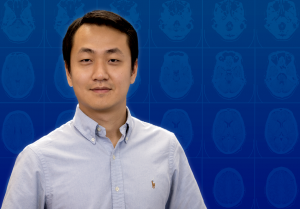 Honcheng Liu, Ph.D., an assistant professor for the Department of Industrial & Systems Engineering (ISE), is working with “small” data to provide personalized and highly accurate radiation therapy treatment. His work supports the effective elimination of tumors and promotes safety for critical structures surrounding tumors.
Honcheng Liu, Ph.D., an assistant professor for the Department of Industrial & Systems Engineering (ISE), is working with “small” data to provide personalized and highly accurate radiation therapy treatment. His work supports the effective elimination of tumors and promotes safety for critical structures surrounding tumors.
In some healthcare practices, the amount of data that is available for certain patients is limited. Although the small data sets may be accessible, they are less informative. Furthermore, when you attempt to fit a mathematical model to limited data, traditional schemes may not apply, which can result in prescription of inaccurate treatment regimens. To address these issues, modified modeling approaches are required to strengthen existing practices.
Radiation treatments can vary from patient to patient, particularly with different types of cancer. Liu believes that diagnostics and treatments should be more personalized to the patient to optimize positive outcomes; however, due to the lack of available data, patient personalized treatment procedures can be challenging.
“A major motivation for this research is that ‘one size fits all’ does not apply in radiation treatment methods from one patient to the next. There is a need to focus on individual patient data and Dr. Liu is using a multi-stage data-driven modeling approach to improve prescriptive accuracy,” said David Kaber, Ph.D., chair of the Department of Industrial & Systems Engineering. “This work represents a major contribution to cancer treatment methods.”
Liu, along with an interdisciplinary team that includes Dr. Bo Lu, from UF’s Department of Radiation Oncology, is working on developing an optimization model to determine plans for radiotherapy of cancer. In order for this model to successfully yield an optimal treatment plan for each patient, certain parameters must be learned for each individual. The model then determines certain outcomes such as frequency, intensity and total number of possible treatments.
A single treatment regimen involves a sequence of treatment fractions, allowing healthy cells to recover between fractions. Depending on the type and intensity of the cancer, the number and intensity of fractions can be different for each patient. Due to limited data, conservative treatment methods are used in the beginning. However, with Liu’s model approach, significantly fewer data are needed to determine optimal configurations for each fraction. Meanwhile, as treatment progresses, more data is collected, reinforcing the quality of configurations for future treatment fractions.
This multi-stage, mathematical modeling approach requires certain data input variables, such as computerized tomography (CT) scans where physicians identify “target” areas as well as critical structures to avoid during treatment. The model also takes into account any disparities between the initial diagnosis and treatment, such as body position during the CT scan versus during radiation therapy. The model continues to make adjustments over the duration of treatment.
“It is hard to predict the completion time of the project, but this approach will be useful for dosimetrists, physicians, and medical physicists. The details will be published in relevant venues for dissemination and serve as a baseline for development of more advanced treatment schemes,” said Liu.